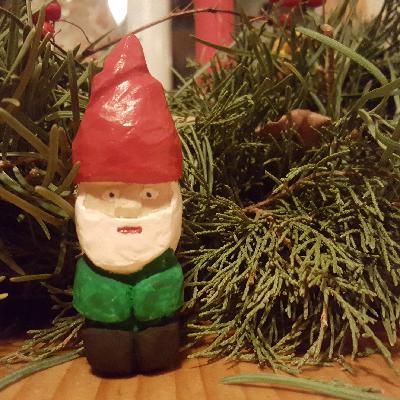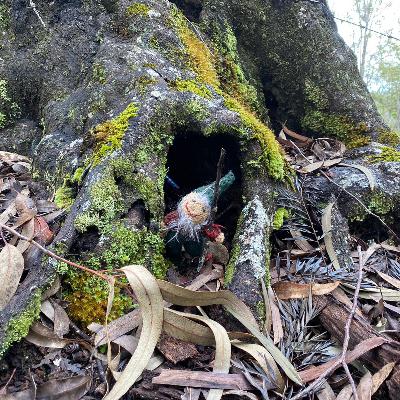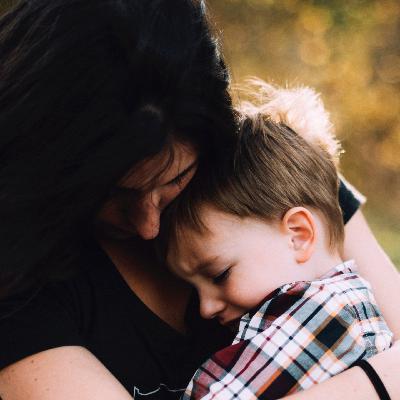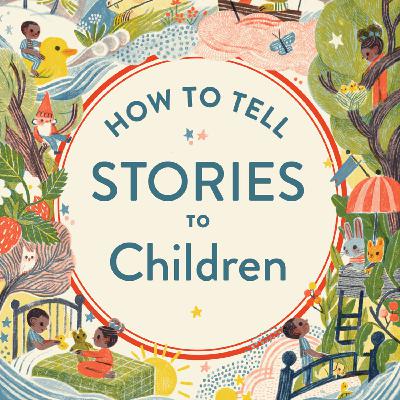Discover How to Tell Stories to Children
How to Tell Stories to Children

How to Tell Stories to Children
Author: How to Tell Stories to Children
Subscribed: 102Played: 911Subscribe
Share
© Copyright 2024 How to Tell Stories to Children
Description
From the authors of How to Tell Stories to Children comes a podcast that supports parents, teachers, and grandparents who want to engage in the intimacy and excitement of storytelling at home.
Our work has been endorsed by Dr. Jane Goodall, New York Times bestselling authors and parenting guides Steve Biddulph, Kim John Payne, Bill McKibben, Richard Rohr, Charles Eisenstein, and many more.
Warning! This is not a collection of children's stories. It's about empowerment. It is about finding your voice. We combine the science of storytelling with a step-by-step method, practice exercises, and sample stories to help you awaken to the storyteller within.
Our work has been endorsed by Dr. Jane Goodall, New York Times bestselling authors and parenting guides Steve Biddulph, Kim John Payne, Bill McKibben, Richard Rohr, Charles Eisenstein, and many more.
Warning! This is not a collection of children's stories. It's about empowerment. It is about finding your voice. We combine the science of storytelling with a step-by-step method, practice exercises, and sample stories to help you awaken to the storyteller within.
29 Episodes
Reverse
After three years of focused work on How to Tell Stories to Children, Joseph Sarosy is moving on. Silke and Joe tell a shared story to commemorate this shift, followed by some of the directions they'll both be taking in the next few weeks and months. Rest assured, their common interests are growing closer, not apart.In part, Joe is stepping away to make more room for Silke to take center stage. Look for more Randolph Roots stories in the near future and some refreshed energy and direction from her. However, Silke is right now in Germany with her mother and her dying father. It is a little uncertain when she will return to this podcast, but return she shall.Joe is shifting his focus back to writing about education, children, and wilderness. His blog Off Grid Kids led to the creation of How to Tell Stories to Children over three years ago, and he's returning to that subject matter with a new blog titled Rare Earth. He is also working on a second book - about trees, neural development, and education. You can find his work at www.josephsarosy.com.Thanks for all your support!
Willie Wichtel, the Christmas gnome, is tired and ill. He worries that no one will be able to make all the Christmas magic happen.When Randolph Roots shows up to give Willie some rest and attention, Eddie Elf takes charge. He helps all the helpful little wichtels get organized, for they have much work to do.Wichtels are helpful little creatures that arrive at our hearths each year to help parents and grandparents with the extra tasks of the holiday season. Chopping kindling, washing dishes, sweeping floors - they do it all silently while the people rest.You can be a wichtel too! But shh...every kind deed they do is a well kept secret.This is Season 2 - After the story, Silke & Joe discuss the story's context and meaning. The story comes first, so that listeners with little children can access them easily.Our goal is to inspire you. We love telling stories, but we love it even more when you feel empowered to tell your own. Whether you find inspiration in the stories, or something of value in the discussion - let that be your guide to opening your own voice.
The Storytelling Tree has a special talent: when a story is told underneath its branches, characters and images from the tale appear in the shapes and twists of its canopy. Summer brings fantastical stories, and in fall the mosaic of colorful leaves paint scenes of incredible richness, surpassed perhaps only by the sparkling frost and prismatic colors of winter's sunlight.World class storytellers visit the tree in dazzling seasonal festivals - till one day little Annabel Rattigan reminds everyone that sharing stories is not merely about spinning wild and elegant yarns, but sharing the sweet, intimate, and sometimes small connections between mother and child.Today, some say the tree never existed. But we know that’s not true for one simple reason - children still find them. Chances are there is a storytelling tree in your backyard this very moment. It may even be peaking in your window, waiting for just the right child to sit underneath its branches.
Randolph and Naughty Foot wake to find a rum-tumbling witch capering through the forest. She loves Halloween and Thanksgiving, and she's a bit of a mischief maker. After turning the forest pond into a giant pumpkin pie, all the animals are invited to the feast.
Thanks to elegant research from some of the best scientists in the world, we are finally beginning to understand why stories wield unique significance for Homo sapiens - including why our brains are able to comprehend them in the first place.If you have ever watched a child act out a story, you have observed something exceptional about the impact of stories on human behavior. Not only do we understand them, we move our bodies and limbs in tandem with the stories in our minds – even if, as is often the case, we know them not to be true. No other animal, so far as we know, possesses this remarkable trait.The human relationship between story and behavior sheds new light on the question of whether a particular story is true or false. Better to ask - is it effective? If it motivates behavior, and that behavior impacts the individual and/or others, then the story is of consequence.But stories aren't just play things. They are the root of our religions, nations, and the precious possessions of our cultures. We may sacrifice much in life, but we will often live and die for the right story. To understand why, we need to take a deeper look into how stories take up residence in our brains, and what happens when they depart. This is your brain on stories.
Randolph visits a corn field, where he listens to the story told by the Corn Mother to the little seeds within the cob. He is gifted a few of the seed babies, which he takes on his journey.On his way home, Randolph comes across a house where the mother and father are arguing. Their child is saddened by their arguments, and Randolph talks with her. He gives her the seed babies, which bring a magical blessing into the home.This is Season 2 - After the story, Silke & Joe discuss the story's context and meaning. The story comes first, so that listeners with little children can access them easily.Our goal is to inspire you. We love telling stories, but we love it even more when you feel empowered to tell your own. Whether you find inspiration in the stories, or something of value in the discussion - let that be your guide to opening your own voice.
Amalgamesh was a mid-level wizard who wished to be a great wizard. For that, he needed a crystal ball. But not just any crystal ball - one crafted by his own hands.In return for a few chickens with which to feed his family, a stone mason helps Amalgamesh polish and craft his crystal ball. Finally, after months of work Amalgamesh discovers a fatal flaw - something he could not see until the crystal was nearly complete.Feeling dejected, Amalgamesh resorts to anger and frustration - till a young child helps him recognize that his place in the community is what makes him a great sorceror, not his greatness above others.This is Season 2 - After the story, Silke & Joe discuss the story's context and meaning. The story comes first, so that listeners with little children can access them easily.Our goal is to inspire you. We love telling stories, but we love it even more when you feel empowered to tell your own. Whether you find inspiration in the stories, or something of value in the discussion - let that be your guide to opening your own voice.
Hi everyone! We are excited to return with Season 2 of our podcast. We are doing things a little differently this season, so here’s what to expect.A story comes first, so that listeners with little children can access them easily. After the story, adults will have a chance to listen to part 2 – where Silke & Joe give a little background and perspective on the story.Our goal is to inspire you. We love telling stories, but we love it even more when you feel empowered to tell your own. You may find inspiration in the stories. You may find something of value in the discussion. Whatever strikes you, let that be your guide to opening your own voice, like a beautiful flower blossoming after a long drink in the summer sun.In this episode, Randolph Roots encounters a circle of fairies singing around an old and dying apple tree. In acknowledging the loss, there is also a celebration of new life - a tiny seedling sprouting nearby.As we move into Autumn, we invite you to explore stories like this with your children. Maybe take a tour of your garden, yard, or neighborhood, then tell a story about a tree or plant that made an impression on you. Tying stories like this into real life experiences can be incredibly meaningful for both parent and child.P.S - We will still occasionally publish episodes on timely storytelling topics and ideas.
Telling stories can be a fun way to connect with the whole family - whether that's around a campfire or your kitchen table. In this episode, we share a simple method that gets the ball rolling - so that everyone is involved.The format is simple - each person has a chance to tell a story, real or imaginary, and also to listen. The goal is short, easy stories - so no one feels pressured to “do it right.” By drawing inspiration from the previous story, you eventually get a “snowball effect” that turns into laughter, creativity, and lifelong memories.--Photo by Josue Michel on UnSplash
Children who have suffered an injury, be it physical or psychological, benefit greatly from the healing format of a story - especially from a parent or loved one.This can be as simple as helping our little ones process a tumble by telling (and allowing them to retell) how it happened. But it can also be as complicated as a therapeutic story that helps a child process a traumatic event with big emotions.The goal of this episode is to help you define trauma, differentiate between small and large traumatic events, and give you some guidance on the kinds of stories that may work in different contexts. Further resources are provided at the end.Disclaimer - If you or your child is experiencing significant psychological or emotional stress, please seek the help of a doctor, therapist, or another qualified professional.In this episode, we define 3 types of healing stories:Reconstruction and Repetition of Real EventsSoothing/Calming StoriesTherapeutic StoriesFurther Resources on Therapeutic StorytellingTherapeutic Storytelling by Susan PerrowUsing Therapeutic Storytelling With Children by John Sommers-Flanagan, PHDGuidelines for Therapeutic Story Writing by Susan LaingStories to Light the Night by Susan Perrow--Photo by Jordan Whitt on UnSplash
Imagination is like a muscle, it takes practice to make it strong. In this episode, we share some ideas and practices to help you strengthen those muscles and get in touch with your natural creative voice.The number one piece of feedback we get from adults is that it’s hard to be creative. Some say they feel as if they have no imagination at all.We think you do, and there are several strategies you can use to build a colorful mindscape, including:PersonificationVisualizationRelaxation (don’t overlook this)Regular practiceLearning from childrenNo matter where you’re at today, it’s important not to criticize yourself. The modern world is a highly complex place, and internal criticism is a goblin of creativity. Nothing will slow you down more than this. On the other hand, just a little bit of courage and peace in your own body will open doors in your mind that you may not even be able to see right now.We promise they’re there. Imagination is a major part of what makes you a human. So, start by respecting yourself. Take a moment to acknowledge where you are right now. You’re that lovely person who is trying to be who she needs to be. That alone is an enormous gift you bring into the world.Above all, don’t forget to practice. It’s amazing where a two minute story will lead sometimes. Even just one meaningful story moment with your kids will make it easier to do it again - because you’ll feel the connection and love in your bones. You’ll come running back for more.
Did your dad ever tell you a funny story, a wild story, or an unforgettable story? If so, we bet you never forgot. It's a common way for men to connect with children, and there's something about a good story that stays with us.In this episode, we celebrate the many ways dads show up in kids' lives, and how storytelling is often the doorway into their hearts and souls.It's not always easy for men to express intimacy, but once you get Dad spinning a yarn there is something childlike, something playful, something deeply intuitive and connecting that can arise.This heartfelt connection is always our focus at How to Tell Stories to Children. Forget the blockbusters. The simple, often ridiculous, or goofy stories are sometimes the best stories of all. They stay with us forever when they come from someone who truly loves.If you're a father, we highly recommend taking the time to tell stories with your kids. They will be some of your greatest memories, and just like you, your kids will never forget.--Photo by Kelly Sikkema on UnSplash
The method we teach is called intuitive storytelling. That means you make up the story on the spot. At first this may sound difficult, but everyone can do it and it’s not much different from having a conversation. Prepared stories, like prepared speeches, are generally harder because they induce stress.Tapping into this intuitive method is easy once we recognize:The goal of storytelling is connection with your child, not a bestseller.It’s easier when you’re at ease (not distracted).You have to value your stories, even when they are simple.Valuing your stories turns out to have major consequences. Not only does it lead to more engaged and creative stories, it models to your children that their voice matters.This could be likened to a child’s simple drawing. If we look at it and compare it to Da Vinci, we have missed the point. Sharing our stories means loving ourselves, believing in ourselves, and acknowledging our voice. This is a crucial message to model to children.They will love you for it.
From grass, we weave the doll. From the doll, we weave the story. What we’re doing is rooting our story in the physical earth. We touch it. We play with it. We create imaginative worlds. This is the power of story, and it creates a very rich experience.In this episode, we explore the theme of self-worth and beauty through the lens of a common blade of grass, who begins to compare herself to the tulip. We will also teach you how to make a simple grass doll (on our website).A human figure - whether of sticks, plastic, or yarn - is an essential ingredient of play. As a parent, making one for your child out of everyday objects from the earth can be very rewarding. And it only takes five minutes.The story takes your character even further. You and your child witness the grass becoming a person, and the person becoming a story. Soon we’re building homes out of stones, gardens out of leaves, and super-highways for our imaginations.We call this the Storytelling Loop. It is a journey we take with our kids. We start with something real (like grass), then tell a creative story about it. When we finish, the grass takes on new meaning. Nothing has changed, but everything has changed. Play is often a final component, as a child will commonly repeat or act out the story with a favorite doll - in this case the one you just made!In This EpisodeExplore the theme of self-worth and beautyLearn how to make a grass dollWatch the video to see an exampleListen to the story of Simplicity, or tell your ownExplore how storytelling changes your child’s relationship to the grass under her feet. Can you see other characters and stories ready to come alive in your backyard?
True stories of motherhood are a gift both to those who speak and to those who listen. Your story is unique. It is worth sharing.In this episode, we draw attention to the need for mothers of all kinds to share your stories and speak your truth. What is motherhood to you? What has it been like to bring life into this world? For men, this is an opportunity to listen.Listening with patience and without an agenda is one of the greatest gifts we can give to another human being. Telling stories is not merely about telling stories. It requires a listener, and within the two a relationship is formed. What does it mean to truly listen this Mothers Day? What does it mean to truly speak?Your story resonates out like ripples on a pond, touching the hearts of girls, boys, men and women - many of whom will be mothers some day, will tend for mothers, and live to tell their own stories.There are 2 billion mothers on the earth. We invite you to truly listen to the ones in your life. For many of you, this may be yourself.And thank you to all the wonderful mothers out there! Happy Mothers Day!
Baking bread with children can be one of the most rewarding experiences, second only to the joy of eating it. We take it one step further by drawing a story into the experience.Stories help us tie our imaginations into the web of reality at our fingertips, in this case the dough. By listening to a story and helping in the kitchen, we bake a rich experience out of simple ingredients, a process we call the Storytelling Loop.The Storytelling Loop is a journey we take with our kids. We start with something real (like dough), then “plant” a story in it. When we finish, our kids are left with something very real that sparks both memories and their imagination. Play is often a further component, as children commonly repeat or act out the story with a favorite doll or stuffy. Tasting the fresh baked bread makes this experience one of the sweetest.In This EpisodeLearn how to bake bread as a storytelling experienceVisit our website for ingredients and a video tutorialAs the dough rises, listen to the recorded story of “Baker Lou & The Mouse King,” or tell your ownExplore how storytelling can change your relationship to real things. Can you see each ingredient - water, honey, grain, and salt - as a character in your story?
We’re celebrating mother earth this year by telling stories that draw attention to her beauty. There are countless ways to do this, and in this episode we give several examples as well as some guidance on how to pick and craft the right one for your child.On our website, we’ve also included a short video with a quick example of how we do it, something we call the Storytelling Loop.The Storytelling Loop is a great way to awaken interest by “planting” a story in a common object or activity. For example, if we tell a story about a stone, a real stone, a child tends to be curious about that very stone after the story.Likewise, if we tell a story about Batman or fairies, there is often a newfound interest in these characters. The interest our story has sparked often leads a child to continue exploring the subject on their own.So this Earth Day we’re crafting stories to draw our attention to the earth under our feet. This can be as simple as a story about the feeling of grass on our toes, the sound of music in the trees, a curious animal, or maybe just an elf who likes the potted plant on your windowsill.Bring all of your senses into your story - what does it feel like? What does it smell like? What do you see, taste, and hear? If we allow our own creativity to awaken our senses, children love to follow along! The rich sensory language can help them get in touch with so much beauty at their fingertips.
We've all been there. We're picking up our child from school or a play date, when suddenly everything goes haywire. Or we've just thrown the world's best birthday party, and right as everyone is leaving the birthday girl has a major meltdown.Transition times can be stressful for child and parent, yet we encounter them almost every day. In this episode, we share a few story strategies that can help parents and children stay connected during these delicate moments.Bringing a story into transitions can give children something to look forward to, rather than merely experiencing the end of what was. Unlike other treats, which are often a substitute, stories give children what they really want - your love and attention.With just a little practice you can easily establish a routine at pick-up time, clean-up, or morning preparations, turning previously stressful transitions into a time you and your child look forward to. Such a skill can be priceless for parents.
There’s nothing like fresh green leaves after a long winter. Resting our eyes on lush grass can be healing, and we can make the plant world sparkle with unique presence for our kids by telling stories that draw their imagination into the growing sprouts.When we tell a story about something real we tie imagination and reality together, a process we call the Storytelling Loop. Play often becomes a third component, because our stories open up a child’s curiosity to explore and create.By “planting” a story in something real (in this case grass), our kids awaken to a very rich experience, with plenty of room to explore both reality and imagination.In This EpisodeLearn how to sprout and grow your own wheat grassListen to a sample story that will connect your little ones to the grass you're growing at homeExplore the background of how story, real life, and creative activities make for a rich sensory experienceYou have the opportunity to play the story we’ve recorded, or use it as an example to tell your ownYou will find more details, including a video planting guide at - https://howtotellstoriestochildren.com/podcast-blog/how-to-grow-fresh-green-storiesIn The StoryMira lives in the city. She loves her mom and dad, but she misses her Grandmother’s farm. Then she remembers the little seed pouch Grandmother gave her. She gathers a pot, some soil, and puts all her love and attention into the little seed babies in her care.In doing so, Mira brings the whole family together, and the story describes the same process you and your child will follow to plant your own seed babies at home.In a second story, Randolph Roots, the gnome of the mountain, visits Mira’s Grandmother, and we get to see the seed babies from a whole new perspective.After The StoryPlant your seed babies. On our website we have a short video with instructions for growing wheat grass, which is very simple. But you could grow beans, squash, or any plants you like. The goal isn’t so much to replicate our process, but to observe the relationship between story and the real world. Have fun with it. Explore. We share stories and examples with the intention of inspiring you to create your own.
No matter who you are or where you’re at in life, your stories matter to your children. Telling stories to kids isn’t about being groovy and liberated. It’s about connecting. It’s about being real.Storytelling is something humans have been doing for thousands of years, because it works. It will work today if you're perfect, but it will also work if you're not. It will even work in spite of any self-doubt, bad attitudes, or feelings of exhaustion. Because it’s not about being good. It’s about connecting.It’s easy to think that storytelling is for perfect parents, the fairy godmother types, the ones who have it all together. But that would mean there are perfect parents out there, and we know that’s not true. We’re imperfect, each of us, in lots of ways. And we also have incredible gifts.Storytelling is a way to share those gifts, and it allows for a huge range of diverse expression. You can be funny. You can be serious. You can make mistakes. No matter how you do it, it will bring you and your children closer.

















